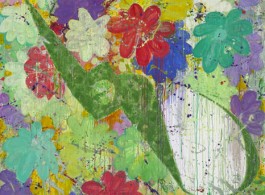[Press Release]
Recapitulation
In classical music, a sonata form consists of three main sections: an exposition, a development, and a recapitulation. The exposition sets the theme, and is the foundation of the musical movement. The development further develops and changes the theme, while the recapitulation presents musical themes from the movement’s exposition using a more elaborate form. This solo exhibition, titled Recapitulation, showcases the stages of Mao Xuhui’s creative career so far. Similar to the recapitulation in music, it recaptures the main themes used in his artwork. Yet, it is not merely a repeat of previous themes, but a multi-perspective revisiting of creative media used over the years that are then infused with new elements. Mao’s Parents Series (late 1980s), Scissors (1990s), Chairs (late 2000), and new work, Kunming Series, come together to form a perfect sonata movement from amidst a lack of form. Recapitulation is a section that is almost close to a generalized summary. Here, Mao completes a retrospective conclusion for “scissor” and “chair.” At the same time, he opens another variation to the theme for his new series, Kunming Series. There are two different properties of contrasting materials: one is an abstract form frozen in an uncertain space and time, while the other is a key space that survives within his personal life that forms a unique creative period. These works not only reproduce thematic styles of the past, but also conduct a re-examination of personal creative processes. They are also representations of past memories that provide a retrospective on the course of his life. After nearly two decades in the pursuit of a creative path filled with grander narratives and contexts, Mao again returns to the norm of his daily life, no longer insisting on new figurative symbols, the colors of expressionism, or symbolic, critical, and conceptual methods of expression. Instead, he purely conveys emotions and nostalgia that lay hidden within the depths of his heart, cultivating this city of artistic life, and records the ordinary and the real in life.



